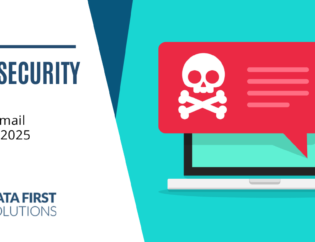
However, the consequences of inadequate strategic IT planning can be far-reaching, affecting an organization’s performance, growth, and ability to adapt to changing market dynamics. This article delves into the profound impacts of insufficient strategic IT planning and emphasizes the paramount importance of proactive IT strategies in fostering long-term success.
The Definition and Significance of Strategic IT Planning
Strategic IT planning encompasses the process of developing a comprehensive roadmap that outlines an organization’s IT goals, objectives, and initiatives in alignment with its broader business strategy. It involves assessing the current state of IT infrastructure, identifying future technology requirements, and formulating strategies to bridge the gap. The importance of strategic IT planning cannot be understated for the following reasons:
Alignment with Business Objectives
By aligning IT investments with overall business goals, organizations ensure that technology initiatives directly contribute to their success and growth. It enables them to prioritize IT projects that have a tangible impact on their core objectives.
Resource Optimization
Strategic IT planning allows organizations to allocate resources effectively, ensuring that IT investments are utilized efficiently and deliver maximum value to the organization. It enables budgeting and prioritization of initiatives based on their strategic significance.
Risk Mitigation
A well-defined IT strategy enables organizations to identify potential risks and vulnerabilities, facilitating the implementation of robust security measures and disaster recovery plans. It ensures that data integrity, privacy, and business continuity are safeguarded.
What are the Consequences of Inadequate IT Planning?
Inefficient Resource Allocation
Without a clear strategic IT plan, organizations may waste resources on unnecessary or redundant technology investments. This leads to inefficient resource allocation, financial waste, and missed opportunities to invest in areas critical to business success, such as innovation or process improvement.
Technology Obsolescence
Inadequate IT planning increases the risk of technology becoming outdated. Without a proactive approach to technology upgrades and advancements, organizations may face compatibility issues, system failures, and an inability to leverage emerging technologies, which can hinder their competitive edge.
Ineffective Decision Making
Strategic IT planning provides valuable insights for decision making. Without it, organizations may lack the necessary data and information to make informed choices. This can result in suboptimal decisions that impact productivity, customer satisfaction, and profitability. Strategic IT planning ensures that decisions related to technology investments are well-informed and aligned with the organization’s overall objectives.
Lack of Agility and Adaptability
In today’s dynamic business environment, organizations must be agile and adaptable to remain competitive. Inadequate IT planning hampers an organization’s ability to respond quickly to market changes, technological advancements, and customer demands. This leads to missed opportunities and competitive disadvantages, as organizations struggle to keep up with the evolving landscape.
What are the Benefits of a Proactive IT Strategy?
Enhanced Efficiency and Productivity
A well-designed IT strategy streamlines business processes, automates manual tasks, and improves overall operational efficiency. It enables organizations to leverage technology as a catalyst for increased productivity and innovation. By identifying opportunities for process optimization and automation, organizations can achieve cost savings and improve the speed and accuracy of their operations.
Improved Customer Experience
Strategic IT planning allows organizations to align their technological capabilities with customer expectations. By leveraging technology solutions to personalize experiences, provide seamless interactions, and deliver products and services in a timely manner, organizations can significantly enhance the customer experience. This, in turn, leads to increased customer satisfaction, loyalty, and advocacy.
Competitive Advantage
Proactive IT strategies enable organizations to gain a competitive edge in the marketplace. By embracing emerging technologies such as artificial intelligence, data analytics, and cloud computing, organizations can differentiate themselves from their competitors. They can leverage these technologies to optimize their operations, develop innovative products and services, and create unique value propositions for their customers.
Future Readiness
A well-crafted IT strategy takes into account future technology trends and prepares organizations for potential disruptions. It fosters a culture of continuous improvement and innovation, ensuring that businesses remain adaptable and resilient in the face of changing market dynamics. By staying ahead of emerging technologies, organizations can seize new opportunities and navigate challenges more effectively.
Stay Ahead of the Curve
Strategic IT planning is no longer a luxury but a necessity for organizations striving to succeed in highly competitive markets. The lack of proactive IT strategies can have profound implications, including inefficient resource allocation, technology obsolescence, ineffective decision making, and an inability to adapt to change.
To overcome these challenges and unlock the benefits of strategic IT planning, organizations must prioritize the alignment of their technology initiatives with their broader business objectives. By investing in robust IT planning processes, organizations can leverage technology as a catalyst for growth, innovation, and long-term success.
To learn more about strategic IT planning and how it can benefit your organization, contact Data First Solutions today. Our team of experts is ready to assist you in developing a tailored IT strategy that aligns with your business goals and maximizes your technology investments.









